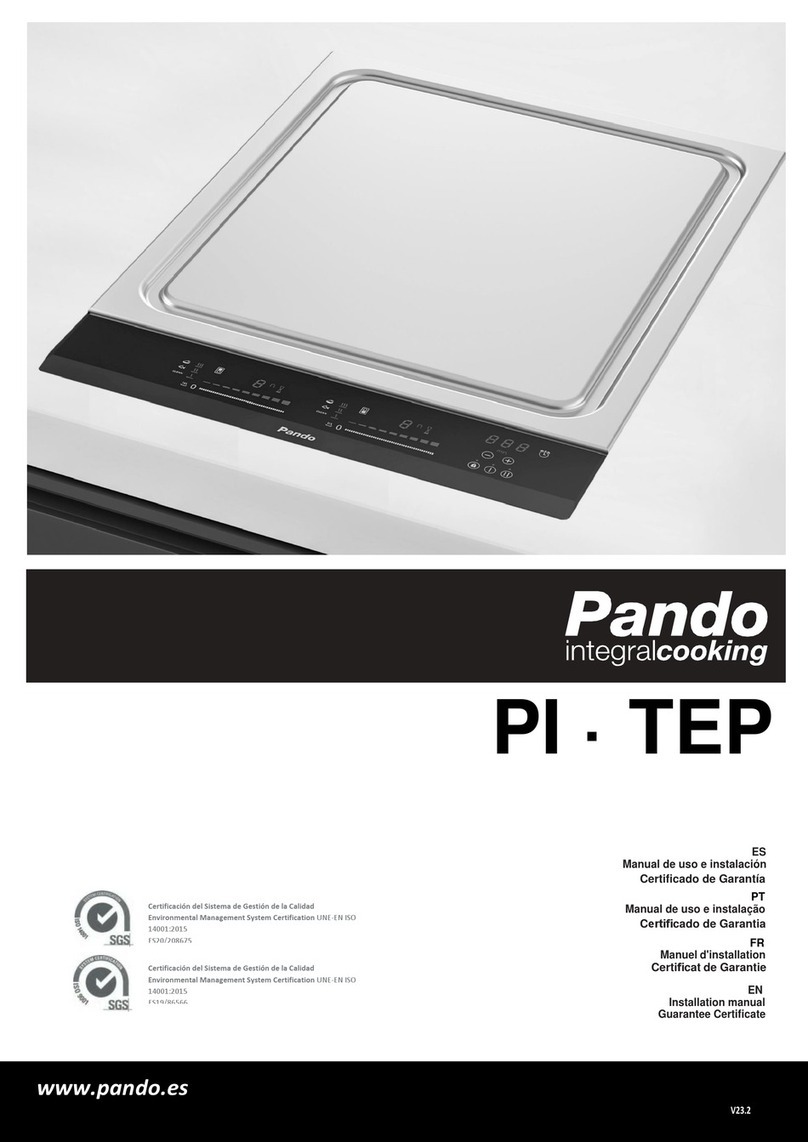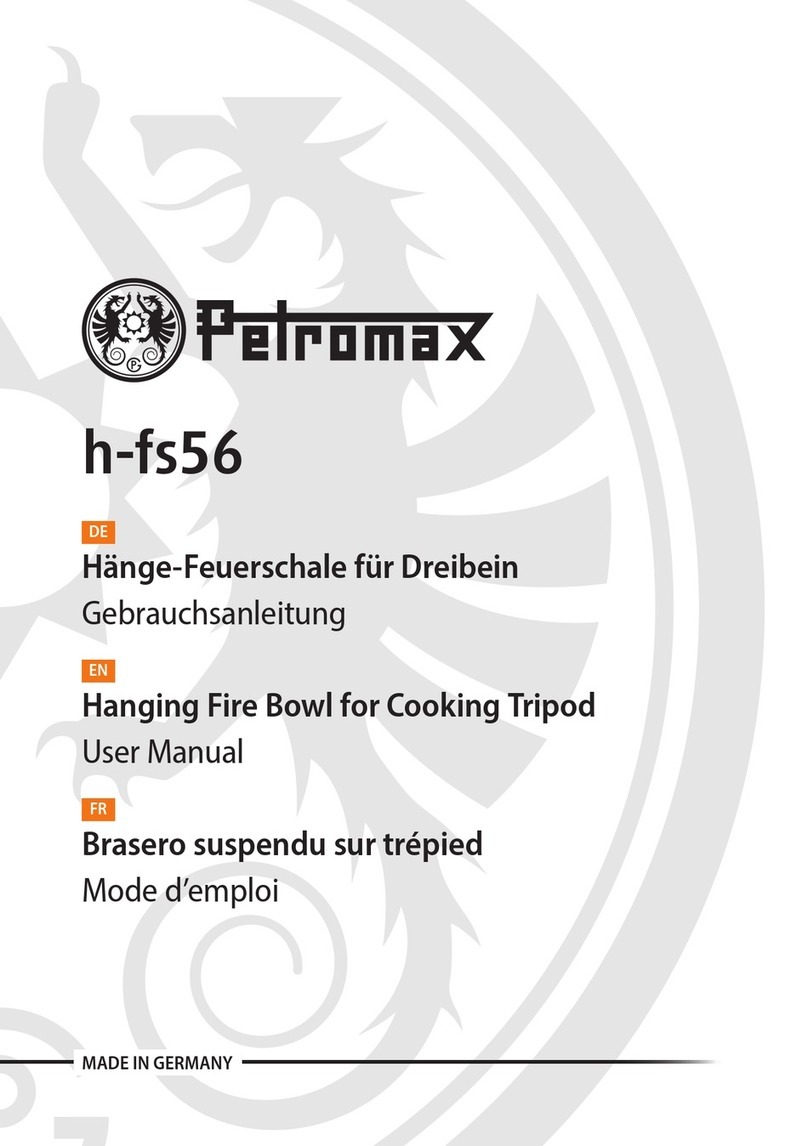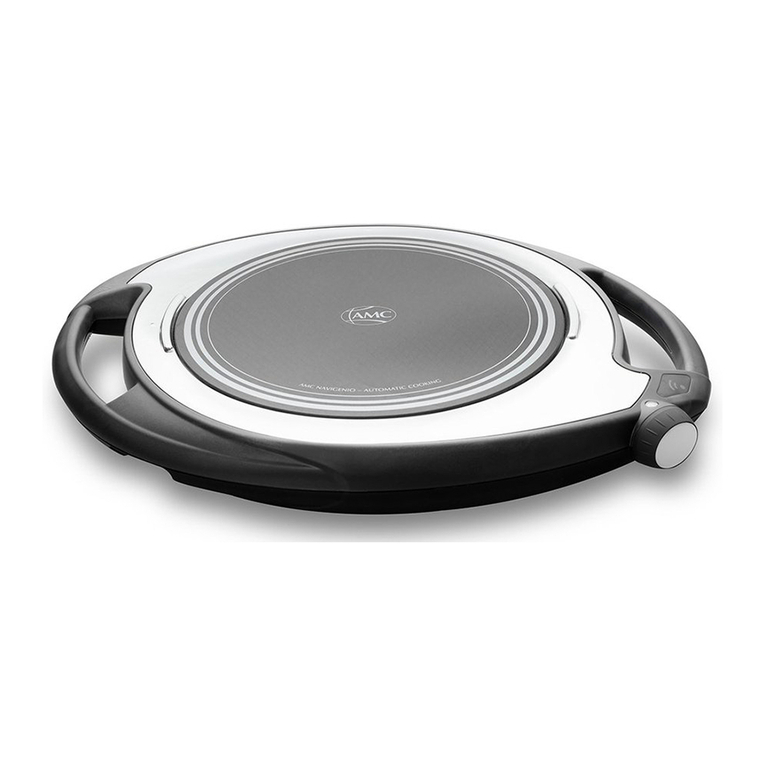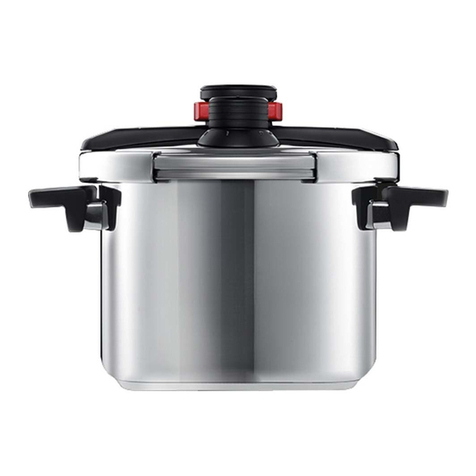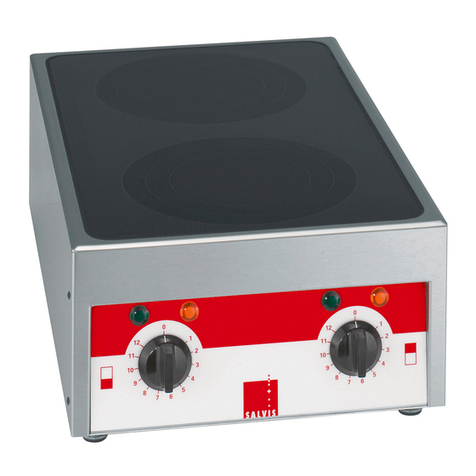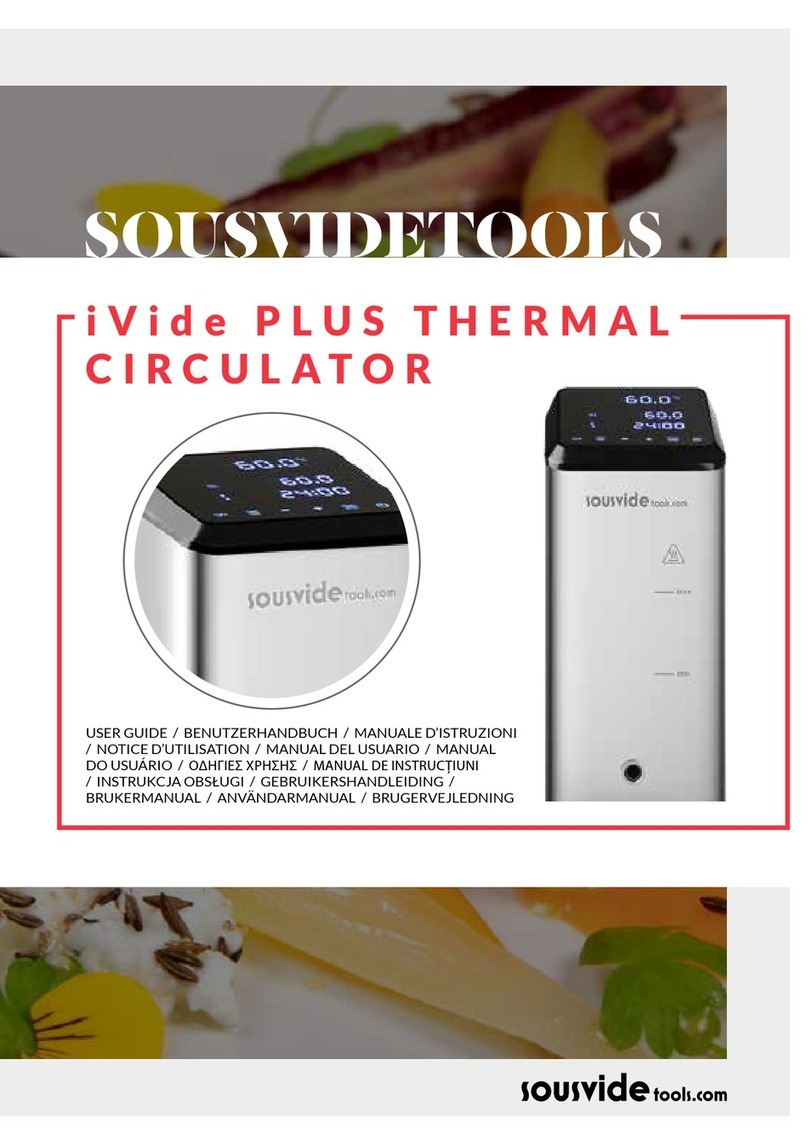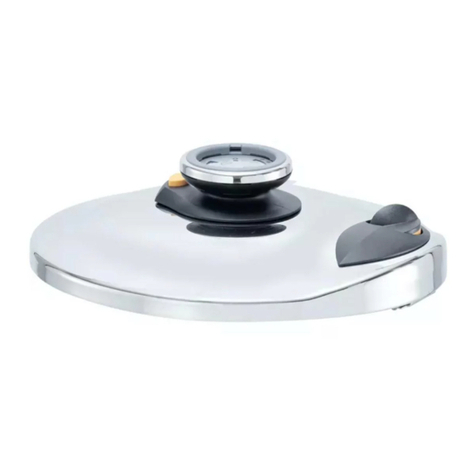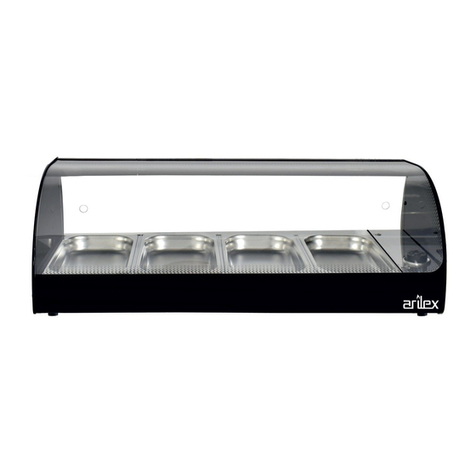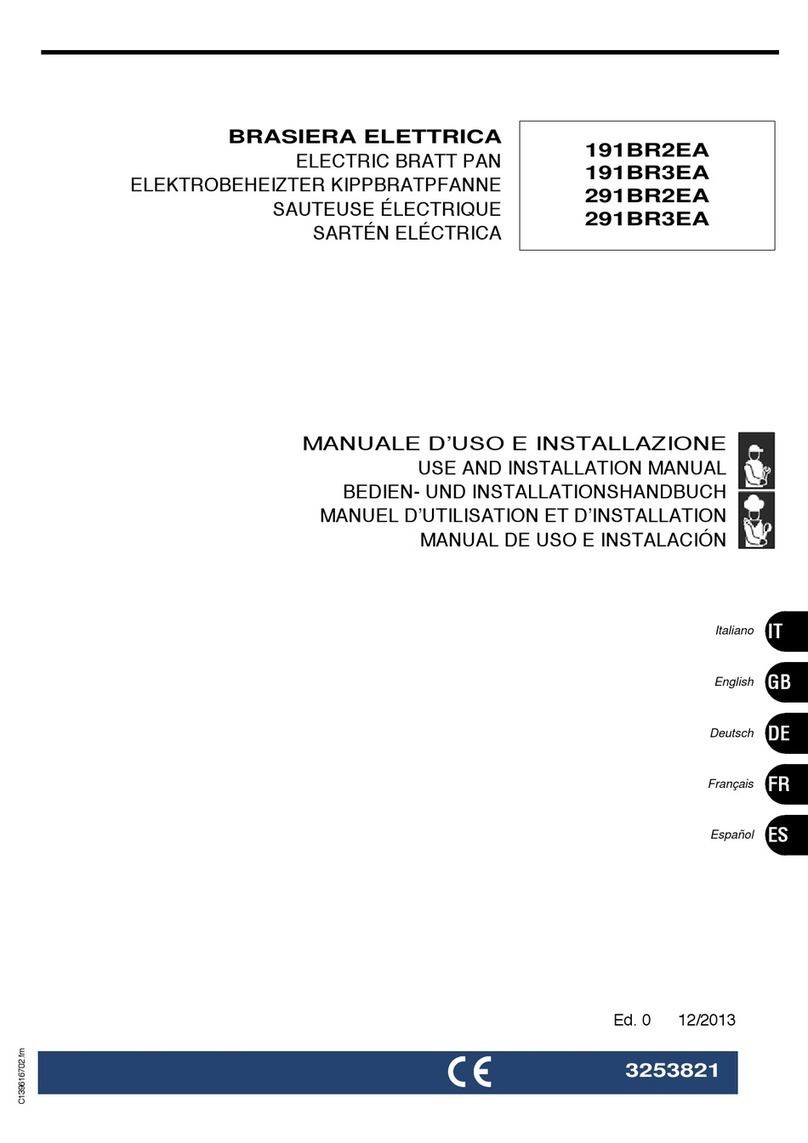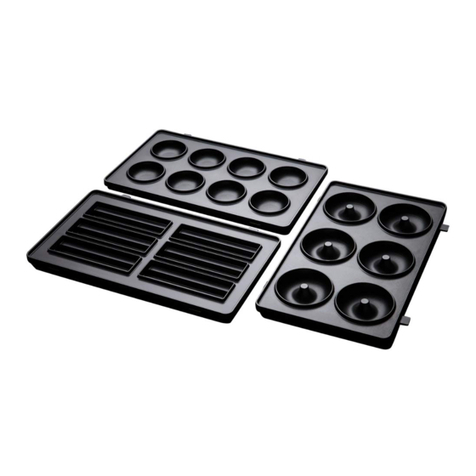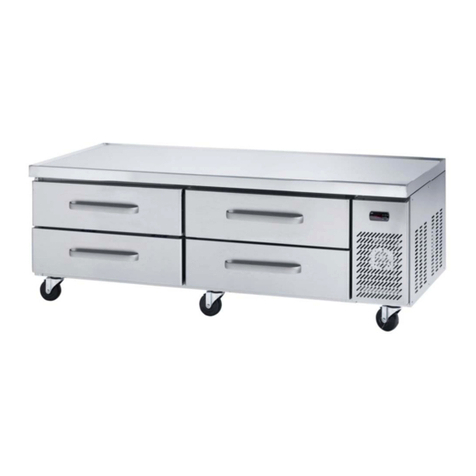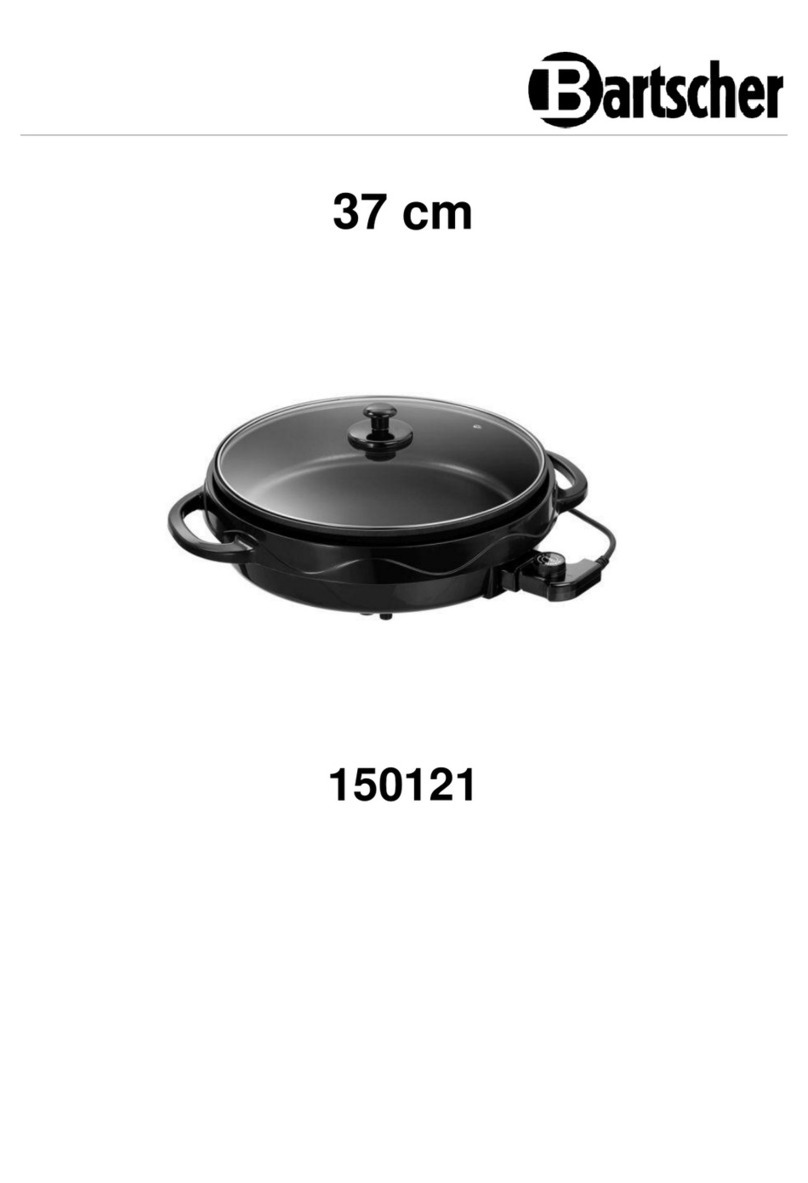B.Pro COOK CLASSIC 2.1 Quick guide

Translation of the original operating instructions
COOK CLASSIC
2.1 / 3.1 / 4.1

2
COOK classic OPERATING INSTRUCTIONS
These instructions are protected by copyright. None of this information may be reproduced,
distributed, used to the advantage of our competitors, or made accessible to third parties either
completely or in part.
Subject to modifications due to technical improvements.
This is the translation of the original operating instructions. Target group: operating personnel,
kitchen directors.
)Important note on special features or special cases.
LExplanatory information in chapters or sections containing instructions.
ªCross reference to a chapter, section or external document.
9Requirement which must be fulfilled before the subsequent steps can be carried out.
Action or activity which must be carried out.
Read and observe operating instructions
Unit model XYZ
A section identified in this way applies only to a particular unit model or unit option.
Signal word!
Type and source of danger
Possible consequences of non-compliance with warnings.
Measures to avoid hazards and the consequences thereof.
The signal word (caution, warning, danger) indicates the level of danger.
Caution warns of possible minor bodily injury or damage to property.
Warning warns of possible serious bodily injury.
Danger warns of possible highly severe/fatal bodily injury.
Copyright
Technical changes
Product documentation
Typographical
conventions
Warnings
General information

3
COOK classic OPERATING INSTRUCTIONS
Contents
About this product Scope of application 7
Conditions of use 7
Product features 7
Standard model 8
Options and accessories 9
Functional principle Air stream/extraction 10
ION TEC (optional) 10
Safety General information 11
About this product 11
Transport 12
Commissioning 13
Handling and operation 14
Shutting down 19
Cleaning and care 19
Maintenance 21
Repairs 21
Standards and guidelines 21
Product marking 21
Additional information for
use in daycare facility and
school catering General information 22
Application 22
Duty to supervise 22
Power supply 22
Improper use as a toy 22
Improper use as a vehicle 22
Castor brakes 22
Improper use as a storage space 22
Hot surfaces 23
Bracket lock 23
Transport Checking for/reporting transport damage 24
Scope of delivery 24
Unpacking 24
Disposing of packaging material 24
Overview Unit 25
Assignment of circuit breakers 28

4
COOK classic OPERATING INSTRUCTIONS
Commissioning Prerequisites for operation 31
Inserting splash guard 31
Carrying out initial cleaning 31
Selecting location 32
Setting up the unit 34
Attaching/detaching skirting panels 36
Plugging the unit into a socket outlet 37
Connecting external units 37
Handling and operation B.PRO Control control electronics 40
Explanation of control buttons 41
Starting/ending extraction mode 44
Switching LED lighting on or o 45
Extracting and filtering cooking fumes 45
Filter change/cleaning intervals 47
Restarting the unit after the temperature sensors are triggered 47
Resetting the circuit breakers 48
Moving the unit to a new location 49
Traversing ramps, recesses, inclined surfaces 50
Folding up and locking tray slide 52
Folding down the attachment 52
Shutting down Shutting unit down 53
Help in the event of
problems All electrical components (fans, LED lighting, socket outlets) are not connected to the
electricity supply 54
One or both fans are not working 54
Extraction performance insucient or only functions on one side 54
Diminished odour filtering 56
Extraction operation is not working, On/O switch is switched on, operation indicator
LED does not light up 56
Lid cannot be fitted correctly 57
The unit has external damage 57
Odour filter box top surface cannot be closed 57
Perception of ozone 57
Cleaning and care Stainless steel 58
Cleaning interval 59
Cleaning methods 59
Cleaning agents 59
Cleaning the unit 60
Cleaning the extraction bridge 61
Cleaning the placement niche 64

5
COOK classic OPERATING INSTRUCTIONS
Cleaning the odour filter box 67
Cleaning the closed sneeze guard 77
Maintenance Having the unit regularly maintained 78
Checking cover seals on the odour filter box 78
Maintaining cover seals on odour filter box 78
Checking the castor brakes 78
Cleaning the grease filters/blank parts 78
Cleaning or replacing the fleece filters 79
Cleaning the grease filters 79
Cleaning the ION TEC 79
Replacing the charcoal filter pads 79
Having periodical electrical safety inspection carried out 80
Cleaning the connection cable and mains plug 80
Checking the connection cable and mains plug 80
Repairs Authorised persons 81
Fault description 81
Replacing components 81
Spare parts 82
Address 82
Replace LEDs 82
Disposal Disposing of charcoal filter pads 83
Disposing of the unit 83
Technical data General data 84
Electrical data 85
Environment 86
Fans 87
Grease filter 87
LED lighting (optional) 87
Ordering information COOK classic2.1 88
COOK classic3.1 88
COOK classic3.1 BHG 88
COOK classic3.1 BHG-I 88
COOK classic4.1 88
Operating instructions 88
Underframe cooling table 88
Transport dolly 88
Multi-frame with bars 88
Cabinet shelf 88
Drawer rail set 88

6
COOK classic OPERATING INSTRUCTIONS
ION TEC 88
Fleece filter 88
Charcoal filter pad 88
3-sided panelling, powder-coated on customer and short sides 88
3-sided panelling, Resopal on customer side, powder-coated on short side 88
Full HPL panelling on customer side 88
Mobile placement table 89
Shelf for placement table 89
B.PRO microfibre cleaning cloth 89
DeepClean Stainless Steel cleaning and care agent 89
COOK classic system instruction 89
Standards, guidelines,
rules, regulations Standards 90
Directives for CE marking/EU declaration of conformity 90
Rules, regulations 90

7
COOK classic OPERATING INSTRUCTIONS
The COOK classic is a powerful extraction and filter system for the extraction and purifying of
fumes during cooking or food preparation with electric cooking units and heat-retaining units in
professional applications.
The COOK classic is primarily suited for use in catering facilities in schools, companies, govern-
ment offices, hospitals, retirement homes (canteens, cafeterias and dining halls) and in the food
service industry and hotels.
The COOK classic must not be used for the extraction of fumes from gas-operated cooking
units or heat-retaining units.
No naked flames may be extracted with the COOK classic, such as those produced when food
is flambéed or cooked on open fires, for example.
The COOK classic is not suitable for extracting substances other than steam, gases or particles
produced during cooking or for general use as a ventilation unit.
It is forbidden to transport persons with or on the unit or its attachments. The unit must not be
used as a substitute for a ladder or as a (children's) climbing frame (danger of tipping).
The unit must not be used to transport or store dangerous or toxic substances/liquids.
Environment
The unit may be used when the ambient temperature is between +10°C and +38°C and at nor-
mal humidity (without condensation).
The unit has been developed for use up to 2000mabove sea level.
Instruction of third parties
If the unit is lent to third parties, such persons must be instructed in the safe handling of the unit
and possible hazards must be pointed out.
General information
The COOK classic is made of stainless steel as standard. It is closed on three sides.
The COOK classic consists of an attachment made up of one extraction bridge and 2exhaust
ducts as well as an underframe with 2odour filter boxes.
The multi-part lid of the extraction bridge closes the extraction bridge and exhaust ducts. It is re-
movable and offers a large storage surface.
The lid can be optionally provided with a stainless steel railing.
Scope of application
Conditions of use
Product features
About this product

8
COOK classic OPERATING INSTRUCTIONS
The COOK classic is supplied with a placement shelf for electric table-top, cooking and heat-
retaining units as standard. Depending on the model, the placement shelf offers space for up to
2(COOK classic2.1), up to 3(COOK classic3.1) or up to 4(COOK classic4.1) electric table-top,
cooking or heat-retaining units with 400mm spacing.
Below the placement shelf there is a freely available usable space for loading with food transport
containers (e.g. BPT420K/KBUH/KBRUH) or for rolling in the underframe cooling table (available
as an accessory).
The placement shelf can be removed for inserting larger, independent cooking units, such as mo-
bile placement tables.
Air guide plates combined with an angled splash guard made of tempered safety glass ensure
precise fume extraction.
The COOK classic chassis comprises eight steering castors 75mm in diameter, two of which
have castor brakes.
Depending on the model, the unit is equipped with different connected load, number of socket
outlets and types for the connection of the electrical table-top, cooking and heat-retaining units.
Handling andoperation
The COOK classic extracts grease, moisture and annoying odours during cooking or while food
is being kept hot, then filters the extracted air and blows it out from beneath the unit.
The B.PRO Control control electronics are located on the right-hand exhaust duct and can be
used toselect all COOK classic functions.
The socket outlets for the connection of electric table-top, cooking and heat-retaining units are
located above the placement shelf within the cooking niche. The fuses for the entire COOK clas-
sic are located below the placement shelf.
The unit has a temperature sensor that is triggered for safety reasons when the temperature in
the exhaust ducts exceeds +60°C. This switches off the extraction mode and the connected
electrical table-top, cooking and heat-retaining units.
The standard COOK classic includes:
• Attachment consisting of an extraction bridge with integrated grease filters, blank parts, ex-
haust ducts and B.PRO Control control electronics
• Underframe with placement shelf, rear wall on customer side and odour filter boxes
• 8 steering castors, 75mm in diameter, 2 of which have brakes
• Height of upper edge of underframe: 900mm
Standard model

9
COOK classic OPERATING INSTRUCTIONS
• Mains connection cable with CEE plugs, 400V/16A (COOK
classic
2.1) or 400V/32A (COOK
classic
3.1 and COOK
classic
4.1)
• 1 x 230 V and 1 x 400 V sockets per cooking zone to connect electric table-top, cooking and
heat-retaining units
The COOK classic is available with the following optional equipment:
• Electrostatic filtering (ION TEC)
• LED lighting for illuminating the hob
• Mains connection cable with CEE plugs, 400V, 16A/32A/63A
• Sneeze guard made of tempered safety glass, closed to customer side, can be folded down
for cleaning (fitted as standard on COOK classic4.1 only)
• Railing (multi-piece) on the lid of the extraction bridge, on customer and short side
• Tray slide, on customer side, fold-down
• Panelling, on customer and short side
• Base bottom, removable
• Stainless-steel castors, 125 mm in diameter (height of underframe upper edge: 960mm)
• Adjustable feet
• Skirting panel, customer side
• Two additional Schuko socket outlets beneath the placement shelf to connect other external
units, such as an underframe cooling table and heat-retaining unit
• Mobile underframe cooling table
• Mobile placement table
• Shelf for placement table
• Transport dolly (COOK ROL 6x4) for moving a B.PROTHERM420 into the free usable space
• Multi-frame with bars for hanging various GN containers
• Insert cabinet shelf made of glass to insert into the multi-frame as additional storage surface
• Drawer rail set for holding various GN 1/1 containers
Options and accessories

10
COOK classic OPERATING INSTRUCTIONS
Back pressure in the odour filter boxes is produced by the air stream for the air guide plate air
nozzles. The three-sided air stream(1), which is channelled through the short side air guide plate
and the two side air guide plates in the adjustment range, directs the fumes into the extraction
bridge(2). The two radial fans generate additional suction in the extraction bridge. The grease is
separated and filtered out in the extraction bridge by the integrated grease filter.
The pre-filtered fumes are routed through the exhaust ducts into the odour filter boxes. Up to
three additional filter stages are located in the odour filter boxes.
The filter elements(3) in the odour filter boxes contain fleece and grease filters. The filter element
and fleece filter incorporate the aerosols and moisture into the extracted fumes.
The optional ION TEC(4) reduces odours and blue smoke in the extracted fumes and also sepa-
rates any particles still present.
The cleaned fumes are forced through charcoal filter pads(5) in the last filter stage. The activated
charcoal largely absorbs the odour components of the fumes. Following that, the cleaned air is
blown out of the unit below(6).
66
22
33
44
2
1 1 11
2
55
The ION TEC functions based on the principle of electrostatic charging. The exhaust air to be
cleaned flows over electrically charged wires (ionisation wires). The particles contained in the ex-
haust air are positively charged in the process. The charged particles are then separated on the
collector plates thanks to the electrostatic affect during the downstream collector stage.
Liquid components in the separated particles, such as oil or emulsion droplets, flow down the
vertical collector plates and collect in the housing bottom well. The high-voltage field creates
ozone. The ozone generated oxidises odour particles in the air stream and is then absorbed on
the activated charcoal in the charcoal filter pad.
Air stream/extraction
ION TEC (optional)
Functional principle

11
COOK classic OPERATING INSTRUCTIONS
The unit has been built to state-of-the art standards. All the requirements necessary to ensure
safe operation have been met. Nevertheless, residual risk does exist when operating the unit.
The safety precautions and warnings in these operating instructions are there to help you protect
yourself against these hazards.
Safety precautions
Thoroughly read and observe the safety precautions in this chapter.
The owner is responsible for ensuring that safety precautions in these operating instructions are
observed.
Warnings
Observe the warnings with the danger symbol (warning triangle) in the text.
Operating instructions
These operating instructions must be read carefully prior to commissioning.
The owner is responsible for ensuring that all users have read these instructions before using the
unit.
Store these operating instructions in a location which is always accessible to operating person-
nel.
Cleaning and maintenance
Disconnect the unit from the power supply before cleaning, maintenance or parts replacement.
Keep the mains and/or unit plug in a suitable place where it is protected from moisture, damage
and dirt while carrying out work.
Scope of application
The owner is responsible for ensuring appropriate and proper use of the unit.
The unit may not be used for room ventilation purposes.
Conditions of use
The unit may only be operated under the permissible ambient conditions.
Do not use the unit outdoors during a thunderstorm.
Users of the unit must be instructed on its operation and must have read and understood the
operating instructions.
The unit must not be used as a substitute for a ladder or as a (children's) climbing frame (danger
of tipping).
General information
About this product
Safety

12
COOK classic OPERATING INSTRUCTIONS
Warning!
Damage and personal injury
If containers with explosive materials are stored in the unit and the unit is put into operation, this
may cause an explosion and subsequent injury and damage to property.
Do not store any explosive materials, such as aerosols with flammable propellant, in the unit.
Warning signs
The following warning signs are mounted to the unit:
Warning sign Meaning – Mounting position
"Disconnect mains plug before opening" in compliance with
DIN EN ISO7010 on both odour filter box top surfaces
"Spraying with water prohibited" sticker in compliance with
DIN4844-2 on the fan insert sheet in the odour filter box
kg
xx
"Maximum load capacity" on the lid of the extraction bridge, on the
placement shelf, on the base bottom and on the tray slide
"Electrical bonding" in compliance with IEC60417 on the inside of the
rear wall of the unit above the potential equalisation connection
"Warning high voltage" sticker in compliance with DIN4844-2 on the
ION TEC filters
Replace any illegible, damaged or missing warning signs immediately.
Upright transport position
Transport the unit in an upright position only.
Transport with a truck or delivery vehicle
The unit may only be transported in a truck or delivery vehicle which features a loading ramp.
The loading ramp must not exceed an angle of inclination of 10°.
Secure the unit to prevent it from moving around. The unit is not properly secured for transport if
only the castor brakes have been applied.
Transport

13
COOK classic OPERATING INSTRUCTIONS
Secure the unit against vertical movement during transport. Use padded locking bars.
When transported with a truck or delivery vehicle, take down external table-top, cooking units or
heat-retaining units from the placement shelf, as otherwise these may slide out of the unit.
Commissioning after storage
Moisture contained in the room air condenses on the surface and the inside of the unit when the
unit is brought from a cold storage room and into a warmer room with a higher level of humidity.
There is a risk of the moisture film causing a malfunction, a short-circuit or an electric shock
when the unit is connected to the power.
Do not operate the unit until it has reached room temperature.
Location
The unit may only be operated on a firm, level, horizontal surface.
With operation of the COOK classic in a niche, a servery counter or an in-line counter, air ext-
raction from the lower sides of the odour filter boxes must not be impeded by walls, panels or
perforated panels.
Specified minimal distances must be complied with. If there is insufficient free space, back pres-
sure is caused in the exhaust air, which impairs unit operation significantly.
For trouble-free extraction operation the unit must never be exposed to draughts.
Warning!
Injury and damage caused by fat explosion or grease fire caused by triggered
sprinkler systems
If the unit is operated in rooms featuring a sprinkler system, sprinklers can be triggered by rising
fumes, cooking steam or smoke emissions which occur during cooking. This brings water into
contact with hot grease/oil; in a worst case scenario, this may cause a fat explosion and a fat
fire, resulting in extremely serious injuries and damage to property.
Adopt suitable measures to use the unit in rooms with sprinkler systems, such as:
– Using special extinguishing agents for grease and oil fires in the sprinkler system.
– Closing/securing sprinklers where water is used as the extinguishing agent or fit with a de-
flector plate while the COOK classic is in use.
Never operate the unit in rooms equipped with an unsuitable sprinkler system.
In all cases, it is strongly recommended to contact relevant expert bodies, such as the fire
service, insurers or the German Employers' Liability Insurance Association, and establish
suitable measures on a joint basis before using the unit in rooms with a sprinkler system.
Commissioning

14
COOK classic OPERATING INSTRUCTIONS
Warning!
Injury and damage caused by fat explosion or fat fire caused by rain
Rain brings water into contact with hot fat; in a worst case scenario, this may cause a fat explosi-
on and a fat fire, resulting in extremely serious injuries and damage to property.
Unit must never be operated outdoors in the rain or in extreme weather conditions, such as
thunderstorms.
Be sure not to cover any existing room ventilation openings.
Observe any applicable regulations regarding gas-operated units in the same room.
Mains connection
The mains voltage and frequency specified on the rating plate must match the corresponding
values for the mains socket outlet.
Only connect the unit to a socket outlet that is protected with a residual current device (RCCB/
residual-current circuit breaker). Each phase must be protected according to the mains connec-
tion.
The unit must not be used if the insulation on the mains cable or the mains plug is damaged.
Insert and remove mains plug only while unit is switched off since, otherwise, the unit electrical
system can be damaged. Connected external units must also be switched off before connecting
or disconnecting the mains plug.
Unplug by pulling on the mains plug housing only.
If the unit needs to be connected to the power supply with a fixed electrical connection on site,
the customer-supplied installation must be equipped with a disconnection device acting on all
poles which is accessible at any time. This must be protected against accidental activation.
A qualified electrician is required to perform this task.
General Information
The user must be aware of the hazards that the unit presents and be able to assess them.
The unit may only be used by persons whose physical, sensory or mental abilities are not sub-
ject to any restrictions relevant to operating the unit.
Keep children away from the unit.
Handling and operation

15
COOK classic OPERATING INSTRUCTIONS
Do not operate the unit without supervision.
The unit may only be used when it is in proper working order.
Secure the unit against accidental use if it is damaged. Have an authorised service point perform
repairs immediately.
ªChapter "Repairs"
Air guide plates, splash guard and filters
Correct operation of the unit is only ensured when all air guide plates, the splash guard and all
filter elements (grease filters, fleece filters, ION TEC (optional) and charcoal filter pads) are cor-
rectly installed.
If the unit is operated without flame protection filters, there is an increased fire hazard caused by
a naked flame being extracted – as a result of an accidental fire in the cooking area, for example.
Sneeze guard (optional; fitted as standard to COOK classic4.1 only)
The sneeze guard consists of tempered safety glass and offers high resistance to impacts and
shocks. No undetected damage is able to occur to the glass such as chipping due to impact or
knocking. When damaged, the tempered safety glass shatters into small, partially intermeshed
fragments, minimising the risk of injury.
The sneeze guard must not be used as a storage surface when folded out, otherwise a danger
of breakage exists.
Temperature monitoring
No naked flames may be extracted with the COOK classic, such as those produced when food
is flambéed or cooked over open fires.
Very hot air is extracted into the unit if there is fire with naked flames in the cooking area. The
unit has a temperature sensor that is triggered when the temperature in the exhaust ducts ex-
ceeds +60°C. This switches off the extraction mode and the connected electrical table-top,
cooking and heat-retaining units. Switch-off is indicated on the B.PRO Control control electro-
nics.
After the unit cools down, the B.PRO Control control electronics must be reset by switching
them off and then on again. In addition, a visual inspection of all filters, the extraction bridge, the
exhaust ducts, the odour filter boxes and the fans for any damage or combustion residues must
be carried out. An authorised person must eliminate all damage before the unit is started up
again.

16
COOK classic OPERATING INSTRUCTIONS
Condensation formation in the extraction area
Moisture produced by cooking escapes with the exhaust air from the odour filter boxes. Con-
densation may form in the floor area beneath the odour filter boxes if moisture levels are high
and floor temperatures are low. This liquid must be regularly wiped up due to risk of slipping and
danger of floor damage.
External, electrical table-top, cooking and heat-retaining units
You must observe specifications and instructions on installation, operation and hazards and si-
milar in the instructions for electrical cooking units and heat-retaining units.
Deep fryers must never be operated directly beside cooking units filled with water (e.g. bain-
maries, pasta cookers etc.). If water comes into contact with hot fat, this may cause a fat explo-
sion and a fat fire in a worst case scenario, resulting in extremely serious injuries and damage to
property.
The connected load of external units must be checked to ensure they comply with technical spe-
cifications before connecting the COOK classic.
When the connected COOK classic is switched on, external units must be switched off in the
unit socket outlets before plugging in or unplugging their mains plugs, otherwise the unit elec-
trical system of both units may be damaged (burning of plug contacts and/or socket outlet con-
tacts).
No external units operated with gas or other fuels may be operated together with the COOK
classic.
Load-bearing capacities
The optional tray slides and the unit lid are designed to hold dishes and/or trays. However, heavy
objects should not be placed on them.
It is not permitted to sit on the unit or the optional attachments.
A max. of 15kg may be placed on the unit lid.
Permissible surface load per attachment:
• Placement shelf: 150 kg
• Tray slide: 25 kg
• Base bottom: 80 kg
• Mobile placement table: 150 kg
Maximum load weight for the complete unit amounts to 200 kg.

17
COOK classic OPERATING INSTRUCTIONS
Unit without placement shelf
Liquids and grease splashing or overflowing from the cooking units are normally caught by the
placement shelf. Liquids or grease may splash onto the floor during cooking when the place-
ment shelf is removed and when free-standing cooking units are used. Wipe any grease or li-
quids that have leaked onto the floor immediately as they pose a slipping hazard.
Hygiene regulations
Observe the relevant food-specific regulations and characteristics of the food type when serving
food.
Location
Unit model with castor brakes
Always apply the castor brakes to prevent the unit from rolling away. The unit can cause injury
and property damage if allowed to roll away accidentally. If the brakes are not effective enough,
have an authorised service point replace the defective castor(s) immediately.
ªChapter "Repairs"
Unit model with adjustable feet
All adjustable feet must be regulated to ensure that the unit stands firmly and does not wobble.
Change of location
Switch the unit off and unplug the mains plug each time before you move it. Objects could slip
off or out of the unit when it is moved. Always remove cooking units from placement shelf and
objects from the storage surfaces and from the optional base bottom.
The transport of objects with stable footing on units with a railing is generally possible, however
they can slip off the top of the unit during a change of location. Therefore, it must be ensured
that the objects are practically and sufficiently secured in accordance with their respective size,
shape and weight. This can, for example, be carried out by using suitable transport containers, a
non-slip surface and/or lashing straps.
If objects are transported on the top of the unit, then the building conditions, such as the clea-
rance height or the clearance width, must be taken into account. Objects on the top of the unit
can cause the centre of gravity of the unit to shift unfavourably, increasing the risk of the unit tip-
ping, especially when driving on angled surfaces.
Always bring the unit to its new intended location at a reasonable speed (no faster than 3km/h).
The person who moves the unit to its new position must always be someone who is capable of
braking the unit in an emergency. An additional person is needed for safety reasons when the
field of vision is limited, during complicated transport manoeuvres and while traversing ramps,
hollows and inclined surfaces.

18
COOK classic OPERATING INSTRUCTIONS
The unit can be tilted to an angle of 10° when stationary before it is at risk of tipping over. You
may only cross sloped surfaces with an incline <10°.
There is danger of tipping when transporting over sloping surfaces. If necessary, place the unit
onto a pallet for transport and implement special safety measures, such as blocking off the ha-
zard area using additional people to help, when carrying the unit.
Under no circumstances may you use a forklift when transferring the unit onto a pallet or remo-
ving it from a pallet. The underframe can become damaged and cause considerable damage.
Use several people to load unit onto the pallet or unload it from the pallet. Always use suitable
protective equipment such as protective gloves.
Observe the relevant industrial safety regulations and information sheets and national regulations
in their current version.
Unit model with castors
If the unit is standing on a sloped surface, it must be secured by extra means, such as wheel
chocks, in addition to applying the castor brakes to prevent it from rolling away accidentally.
Avoid subjecting the castors to excessive load to minimise the risk of damage to the castors:
• Do not move the unit when the castor brakes are applied.
• Avoid impacts.
• Do not traverse bumps or steps.
• Do not traverse uneven floors.
The unit should be pushed only, never pulled.
Always use 2 persons and two hands each when pushing the unit. Due to the weight of the unit,
if only one person pushes it there is a risk that they would not be able to apply the brakes quickly
enough.
Be careful not to pinch your hands between the unit and walls or other objects, such as cabi-
nets.
Due to the low floor clearance, transport the unit over inclined surfaces or ramps with a suitable
means of conveyance, such as a pallet truck.
Unit model with adjustable feet
Transport the unit over sloped surfaces or ramps using suitable means of transport, such as a lift
truck.

19
COOK classic OPERATING INSTRUCTIONS
Disconnecting the mains plug
Insert and remove mains plug only while unit is switched off since, otherwise, the unit electrical
system can be damaged. Only unplug the mains plug by the mains plug housing.
Connected external units must also be switched off before unplugging the mains plug, otherwise
the unit electrical system and customer-supplied socket outlet may be damaged (burning of plug
contacts and socket outlet contacts).
If external units are switched on when plugging in the mains plug again or when switching on the
COOK classic, they can accidentally start up and cause damage and injuries.
Unit preparation
Switch off the unit and unplug the mains plug before cleaning. Water penetrating into the unit
can cause a short-circuit. This can result in malfunctions. There is also risk of electric shock. Re-
move any connected external units.
Take off the odour filter box lid before cleaning the odour filter box. Pull mains plug of fan out of
unit socket outlet of odour filter box. Remove fan, including support plate, from the odour filter
box completely. Pull out the optional ION TEC and remove the charcoal filter pad. Take of the ex-
traction bridge lid. Remove the filter cassettes.
Charcoal filter pads
The charcoal filter pads must be protected against moisture. Wet charcoal filter pads must never
be dried in a microwave oven – this causes a major fire hazard.
Hygiene
You must comply with the specifications in Regulation (EC) no. 852/2004 and your national hygi-
ene regulations.
Cleaning interval
Clean extraction bridge, including grease filters, blank parts and placement niche with air guide
plates daily or after each use (depending on how dirty they are). Replace charcoal filter pad when
saturated.
Replace fleece filter depending on degree of soiling.
Clean odour filter box according to level of soiling, but at least once weekly. Clean (optional) ION
TEC when dirty. Also observe replacement notifications on the B.PRO Control controller in this
respect.
Shutting down
Cleaning and care

20
COOK classic OPERATING INSTRUCTIONS
Cleaning methods
Use approved cleaning methods only.
ªChapter "Cleaning and care"
Do not use steam jet units, high-pressure cleaners, water sprayers or similar cleaning devices.
Cleaning agents
Do not use metal parts for cleaning. Metal parts can damage the unit and/or lead to corrosion.
Do not use pointed or sharp objects for cleaning. They can damage the unit.
Do not use scouring agents. Scouring agents scratch surfaces.
Cleaning agents for synthetic parts
Do not use scouring agents. Scouring agents scratch surfaces. Do not use the following
cleaning agents or cleaning agents containing the following substances (material damage!):
• Ethyl alcohol, isopropyl alcohol and higher alcohols
• Acetone
• Benzene
• Turpentine
• Acetic ester
Cleaning water
Dry the unit thoroughly after cleaning. Remove cleaning water from the placement shelf and the
optional base bottom if present.
A danger of slipping exists if cleaning water runs out of the unit during or after cleaning. There is
also a risk of a short circuit or electric shock.
Completely wipe up any cleaning water which leaks out of the unit.
This manual suits for next models
2
Table of contents

